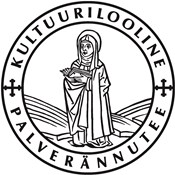From Karilatsi to Ihamaru
We leave the Karilatsi Museum in the morning and continue towards Ihamaru. Before we take a good look at the old bulky milestone by the road. It was waiting to be rediscovered underneath the museum driveway, where it was found in 2019 in the course of some roadworks. The old parish records state that in 1890 granite milestones were placed by Tartu–Võru road; an entry in 1925 says they were painted in the colours of the Estonian flag.

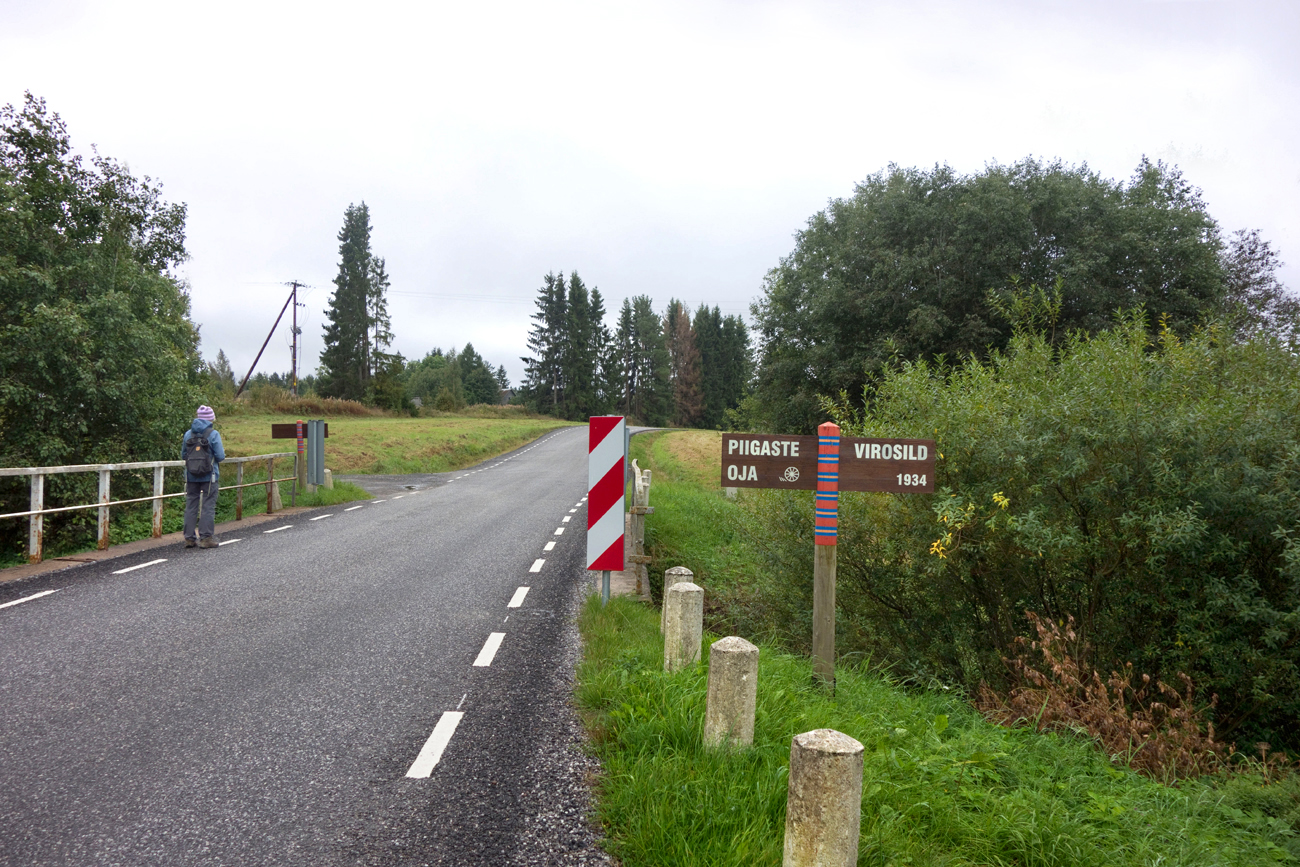
We walk along the Old Postal road. Near Virosilla we again cross the Piigaste stream. The bridge was built in 1934. Soon comes another bridge, Alamusti bridge, taking us across Hilba river. Põlva parish ends here, and Kanepi parish begins.
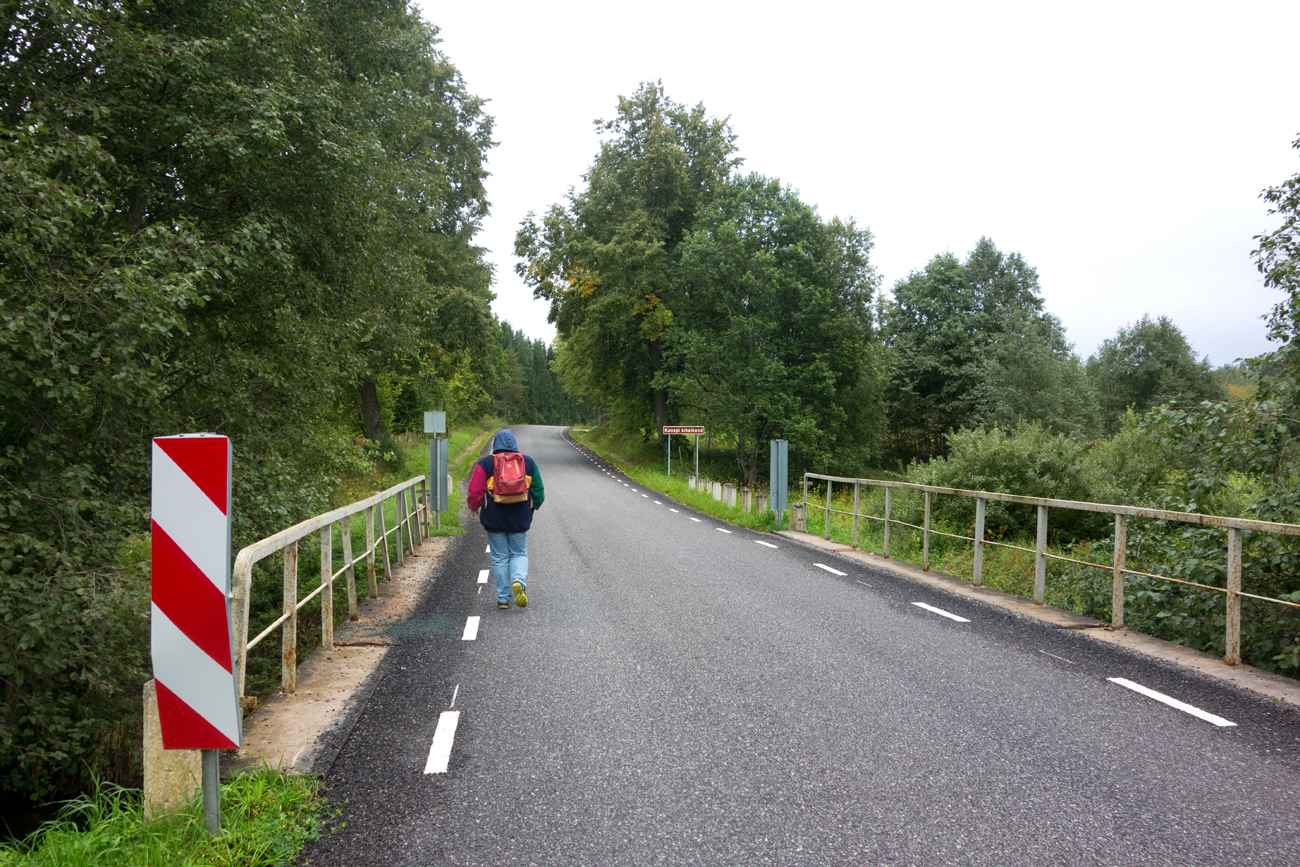
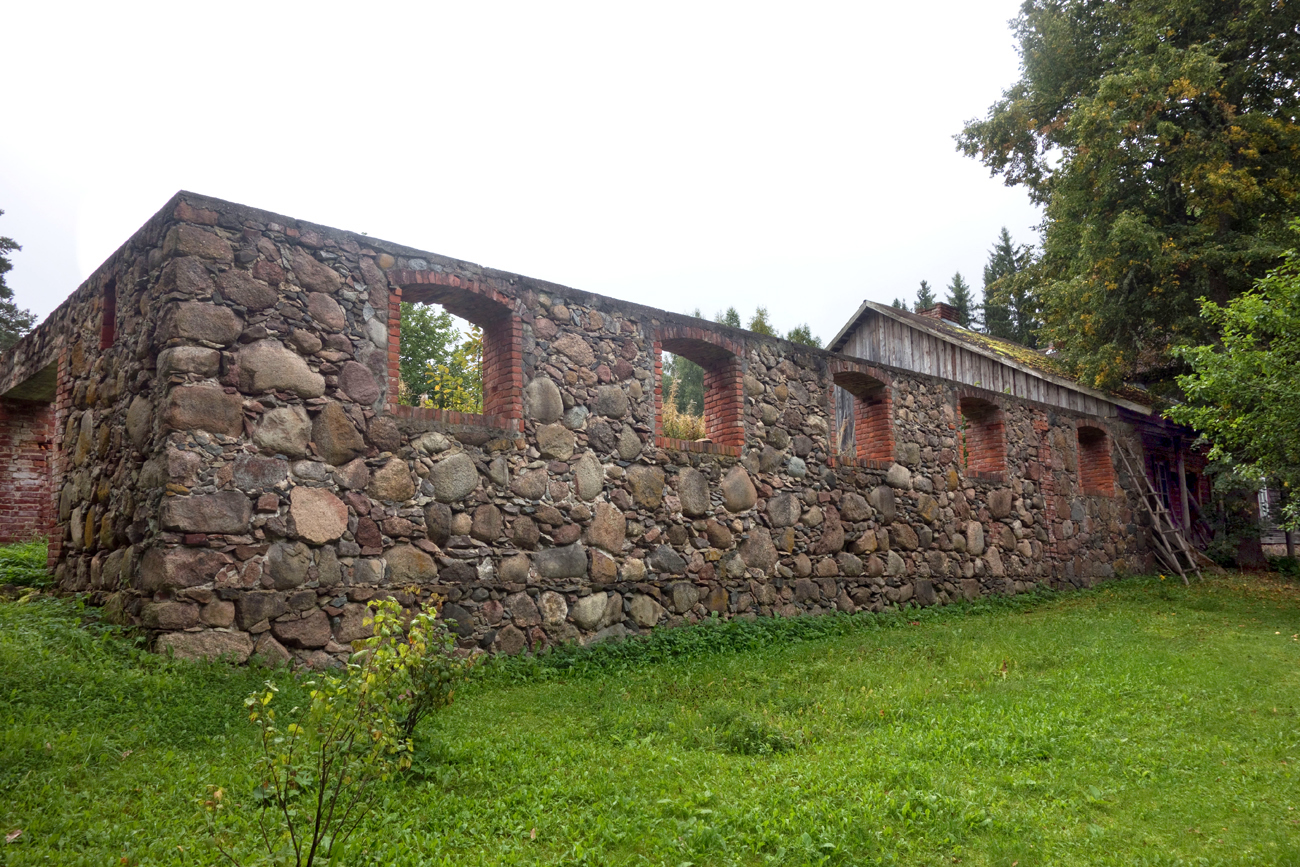

There is an old inn site on the left of the bridge. The Alamusti inn was built in the first half of the 19th century by the postal road. It reportedly operated in 1909. We can explore what is gone and what is left. The wooden house with pillars seems to be someone’s summer cottage, only stone walls have survived of the stable, with old apple trees in the garden.
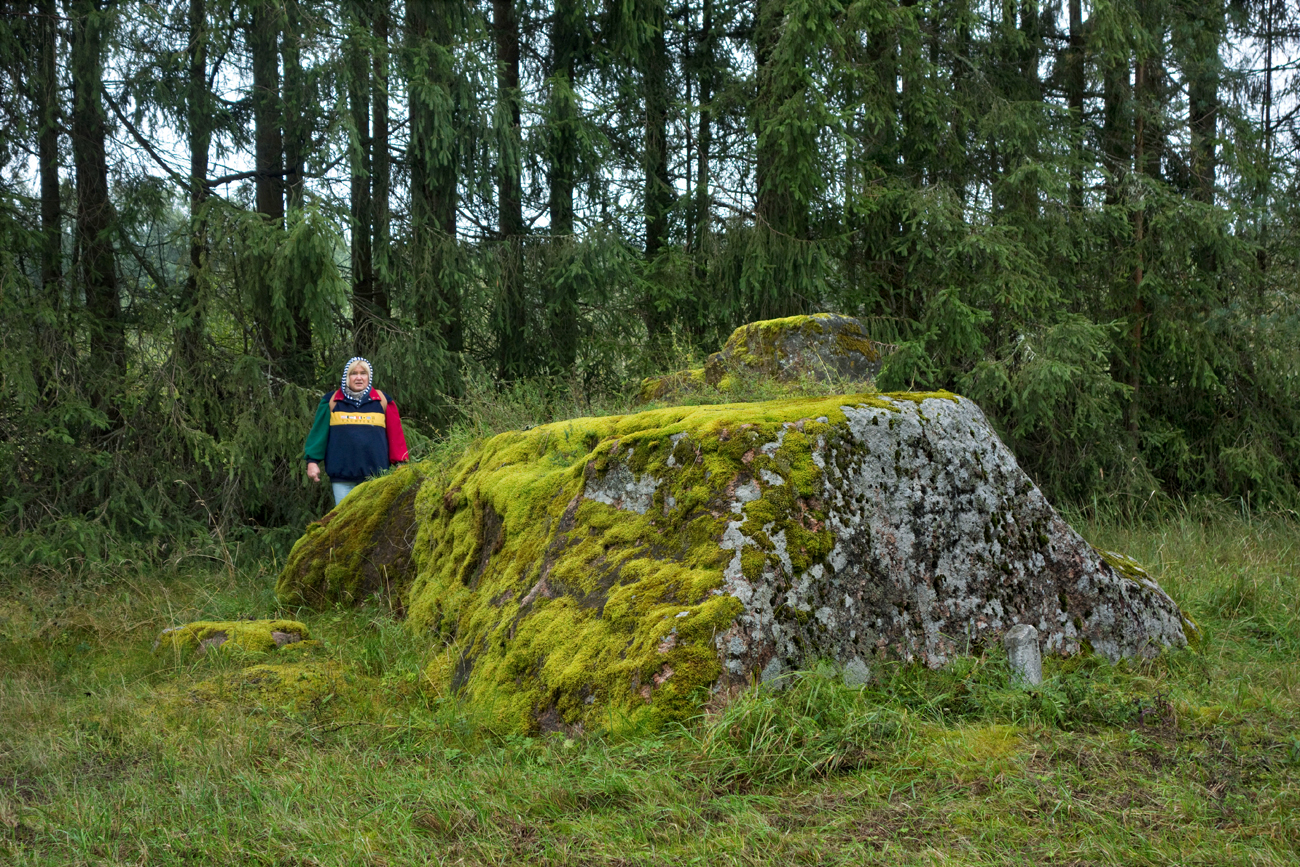

The next thing worth stopping for is a huge boulder by the road called Põdrakivi (elk’s stone). The stone has a hollow that resembles a horse’s hoof print. This was allegedly left either by the horse of Peter the Great or Karl XII. There was an elk’s sculpture on top of it in the 1950s, hence the name. The concrete elk was taken down in the 1960s.
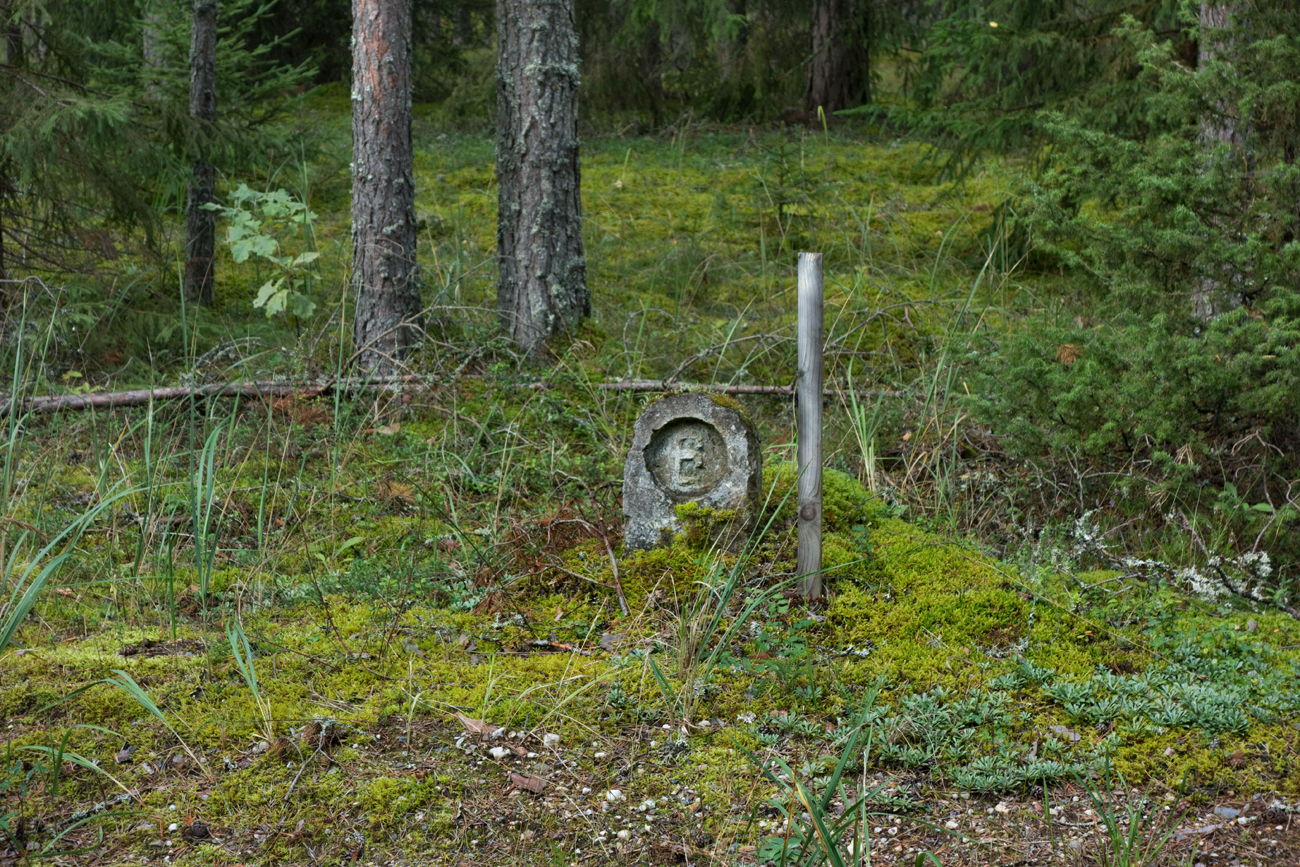
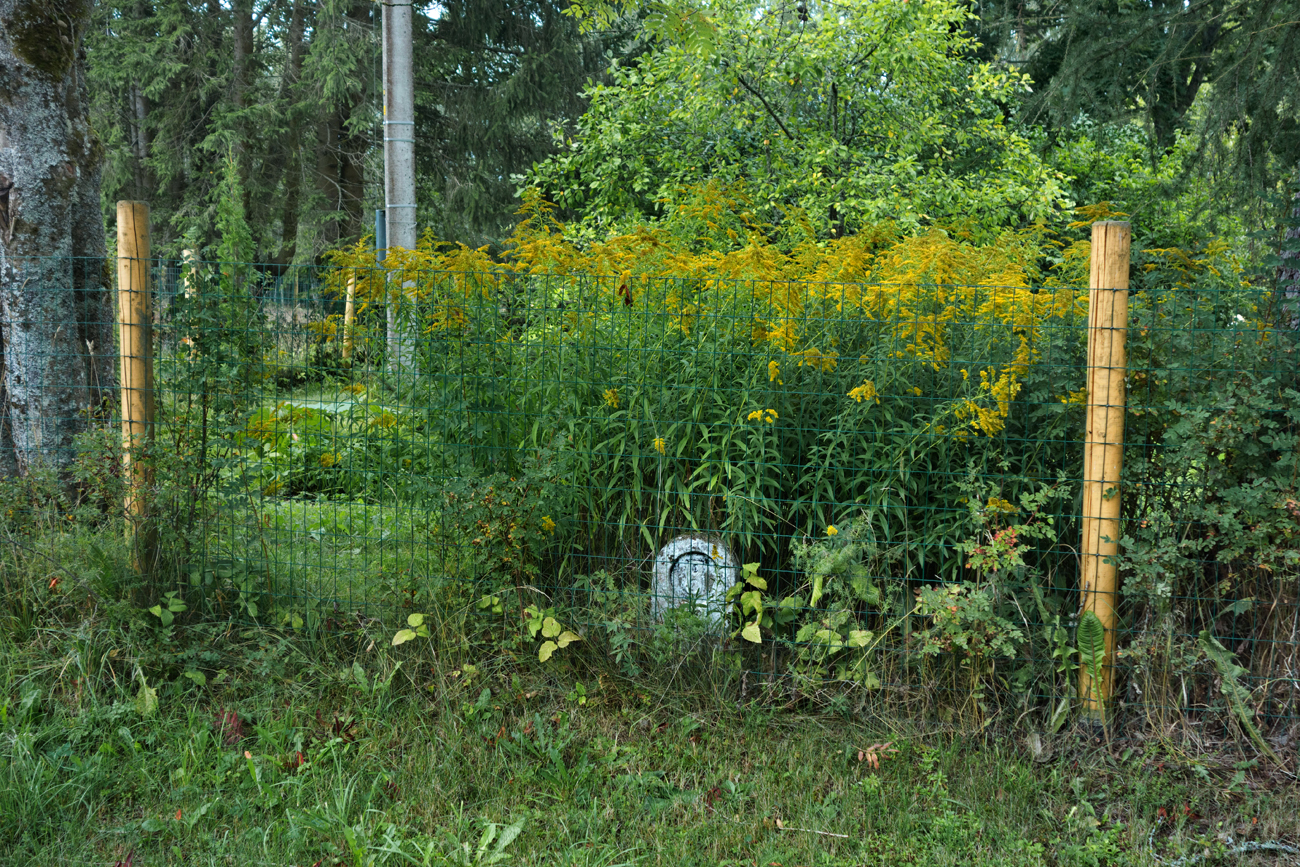
Two picket posts have survived on the postal road from Karilatsi to Ihamaru, both on the right side of the road: no 6 before Palojärv and no 8 behind the fence surrounding Teeääre farm.
In 1922 it was decided in Estonia to replace versts with kilometres. The Russian verst corresponded to 1066 km, hence the roads had to be measured again and new road posts set up. This was the task of parishes. Later a picket post was placed every 200 m in order to have a better overview of roadworks. The white posts each had a black number from 2 to 8.
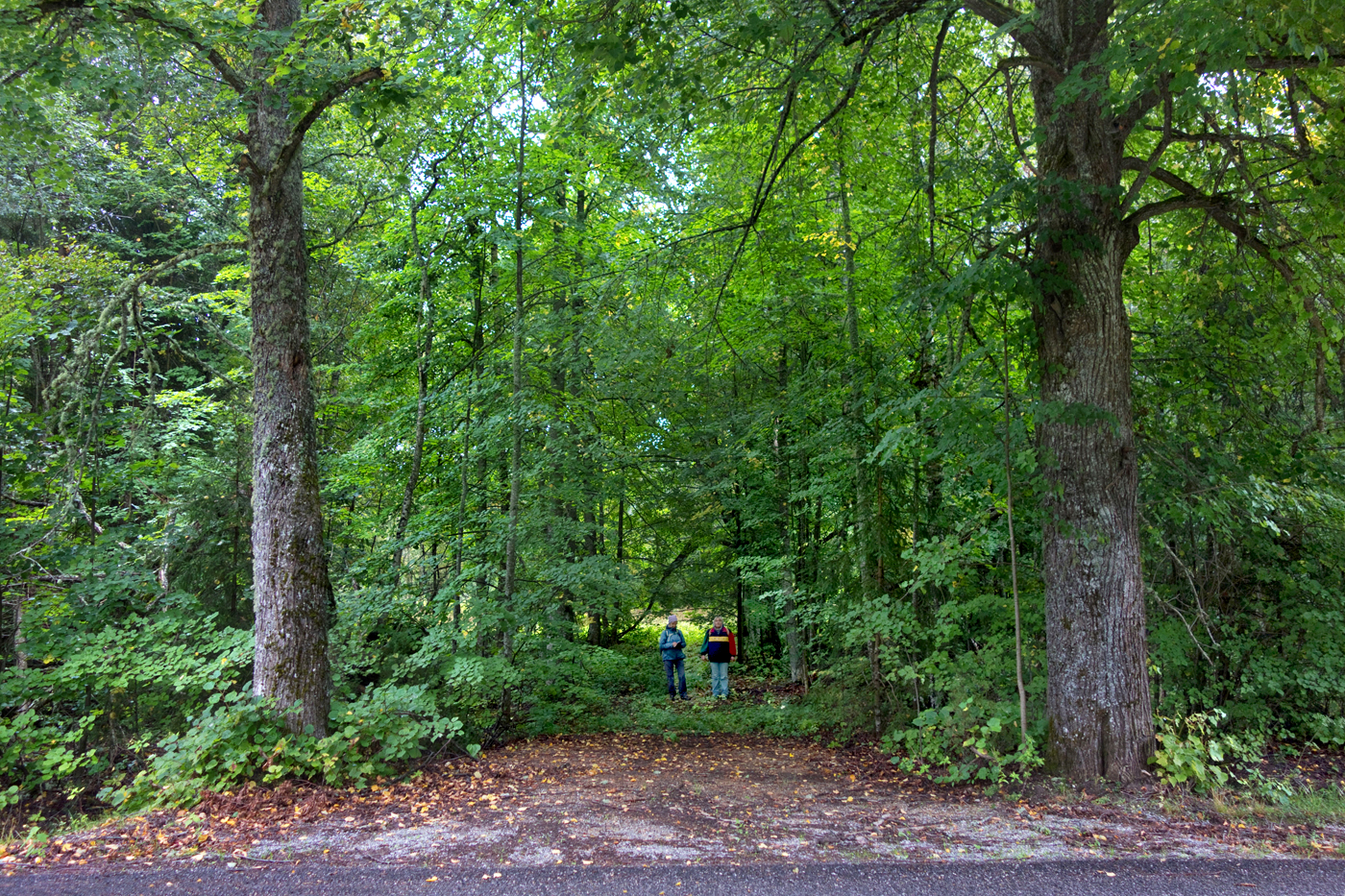
Walking on, we soon see a sign on the left pointing to Ihamaru nature reserve. Estonian nature preservation is over one hundred years old, there are more than three and a half thousand protected natural objects, including one hundred and thirty nature reserves. The sight that opens up now, however, is quite distressing: we protect nature on one side of the road, on the other we cut down a whole forest.
.jpg)
.jpg)
.jpg)

We turn off the road to Suur Palojärv (Big Palojärv Lake) (a sign points to the bonfire place). There are seats, toilets, places for parking and putting up a tent. The pine forest offers mushrooms and various berries.

.jpg)
Suur Palojärv has allegedly the warmest water of all the lakes in Estonia. People come here to have a swim and walk in the woods. Palojärv is a hugely popular place where to spend time in nature.
There is a legend of how the lake came into being.
Where Külasuu now stands, there used to be a pretty lake called Külajärv. Village women often did their washing in the lake so that the small lake struggled to keep its water clean. The lake finally got fed up and flew away for three versts, raining down on a sandy site. Here it again had clear and clean water, surrounded by forests full of berries. In early mornings in hot summer, a dense cloud of fog allegedly appears above the water – the lake is dreaming of its former location in a marshy area –, but by midday it again descends into its clean sandy bed.
Not far away on the other side of the road is Väike (small) Palojärv or Kogrejärv.

On the day of the patron saints on 2 October 2021 we unveiled a prayer bench on the shores of lake Väike Palojärv dedicated to Estonian forest. It had taken a few years to think about such a bench and find a suitable location for it. We finally found just the right place.
The weather was kind to us and we could enjoy a wonderful autumn day. The shimmering –glittering surface of the lake, yellow birch leaves floating in the mild air – a truly golden autumn at its best.
The blessing was read by Reverend Toomas Nigola, Põlva St Mary’s Church. Lagle Parek, Urmas Roht, Juhani Püttsepp and Hendrik Relve talked about forest, people, how the bench came to be. The bench was made by Jüri Metsalu, the text was written by Hendrik Relve, verses by Urmas Roht. We are grateful to them all.
Huge thanks to Urmas Roht whose spinney by the lake now offers a peaceful place to rest.
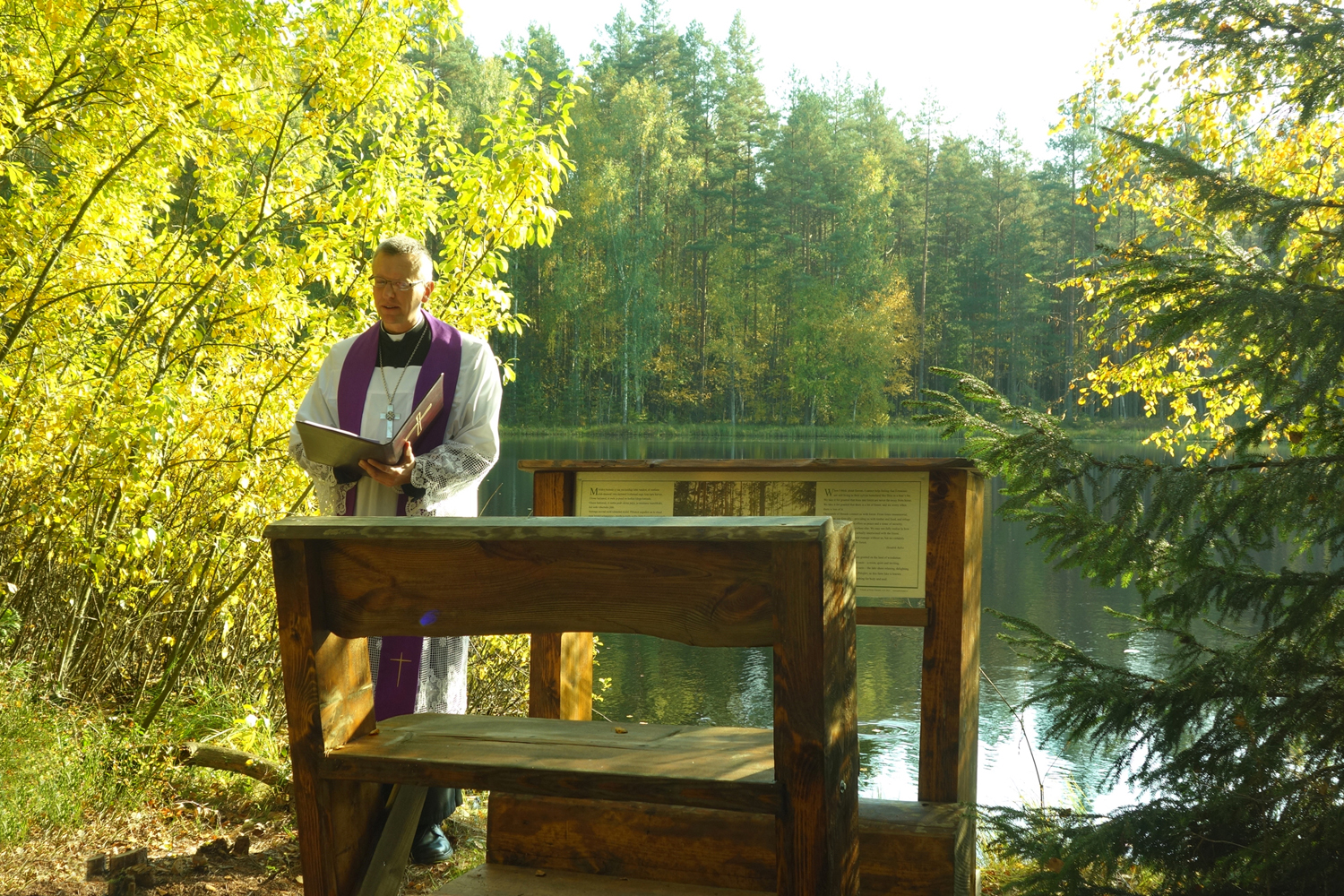
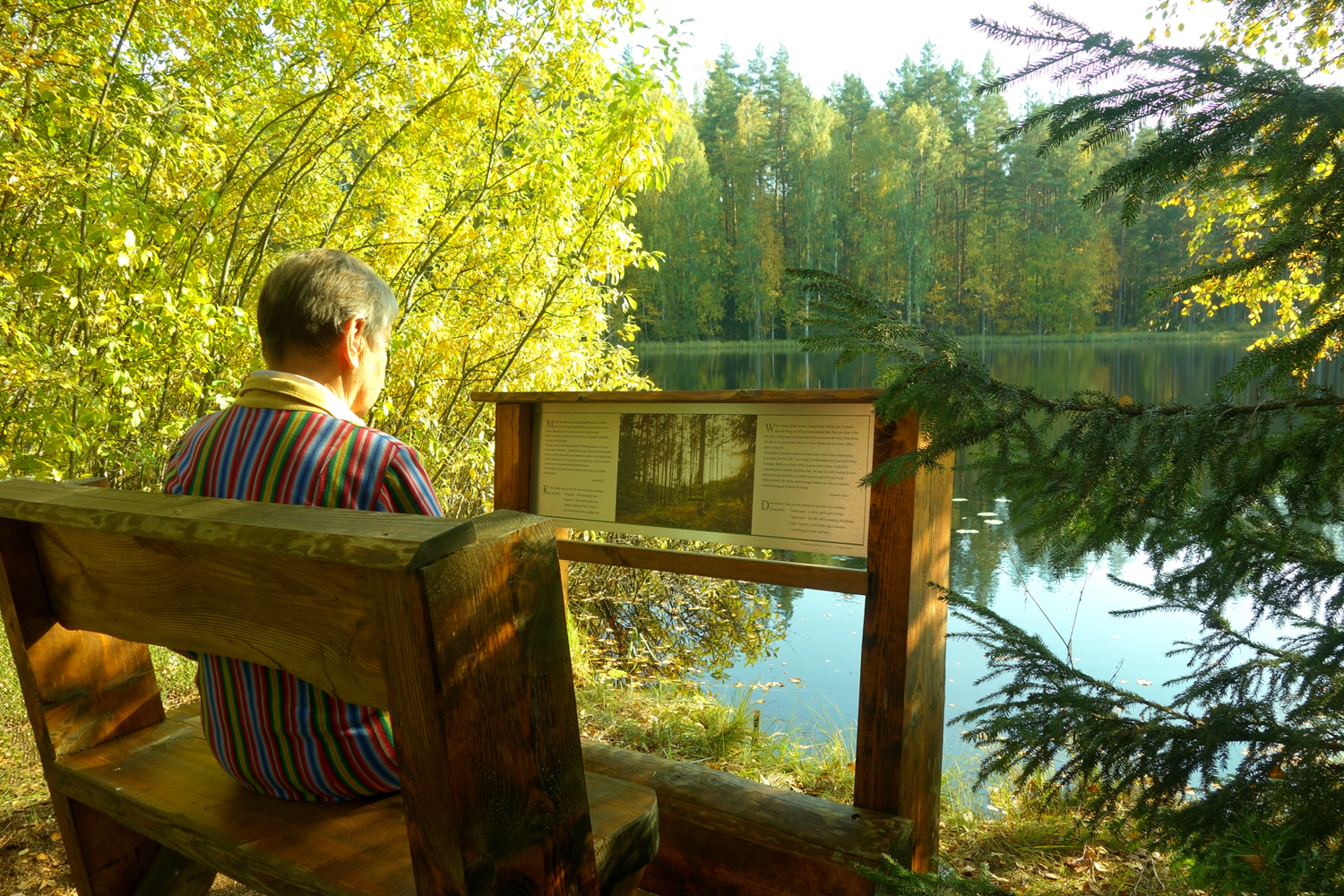
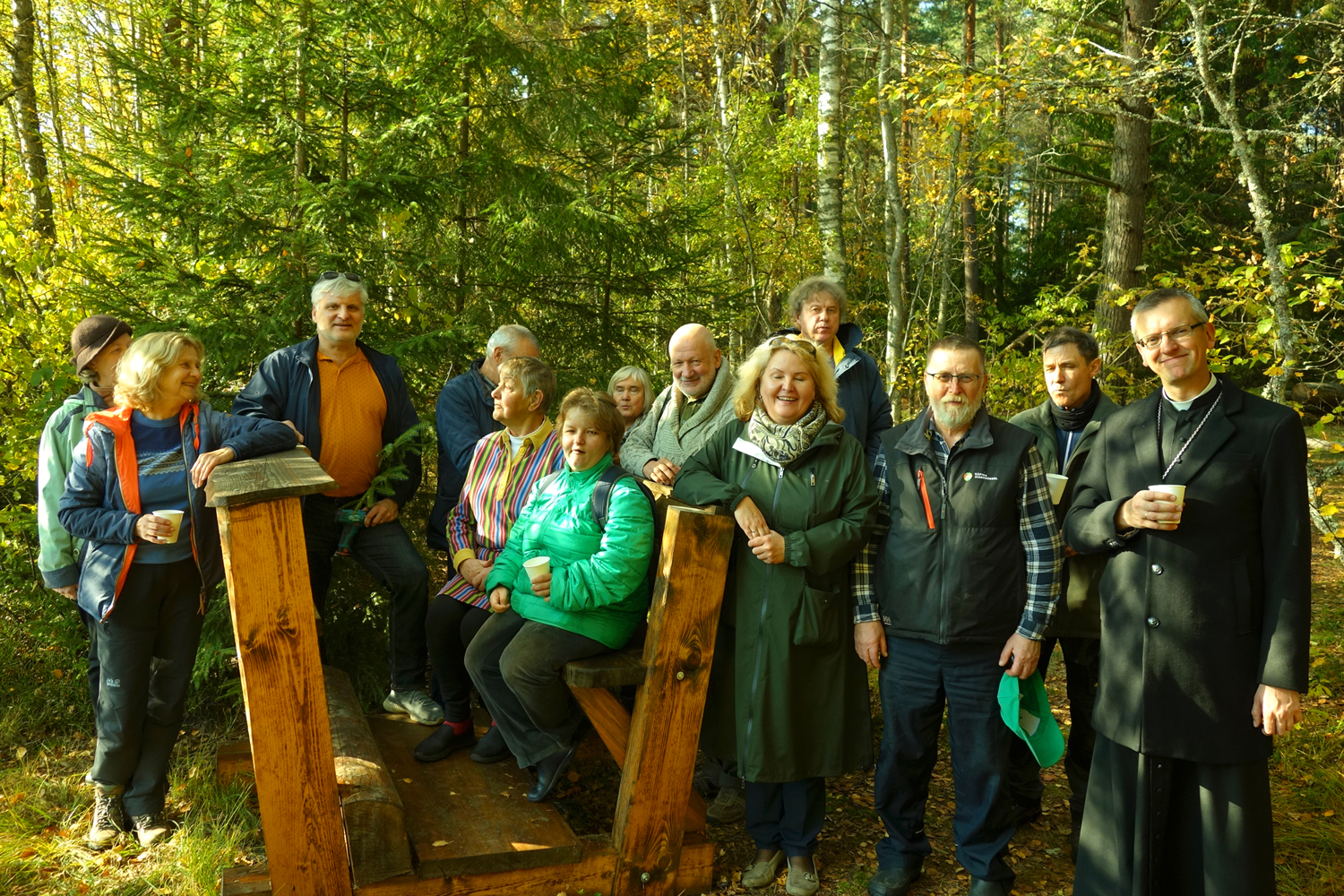
Further on towards Ihamaru, to the left of Palojärve bus stop stands Marise farm, former place of the forester of Karaski manor.
500 m along the Torosoo road on the right is Otsa farm, the birthplace of Heinrich Mark (1911–2004). Heinrich Mark was an Estonian politician, who fled to Finland after Estonia was occupied and later settled in Sweden. In 1971–1990 Mark was deputy prime minister of the exile Estonian government, and in 1990–1992, prime minister in the function of president.
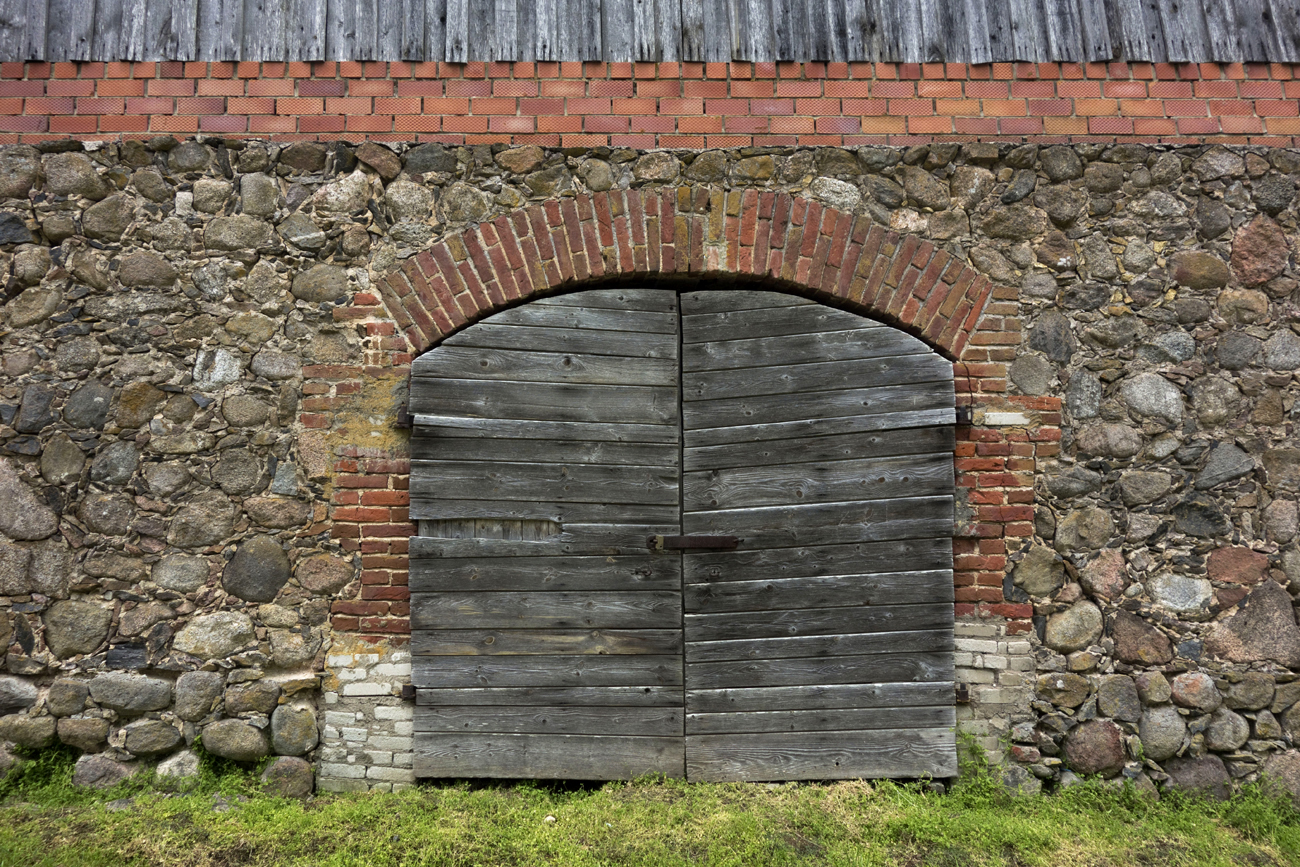
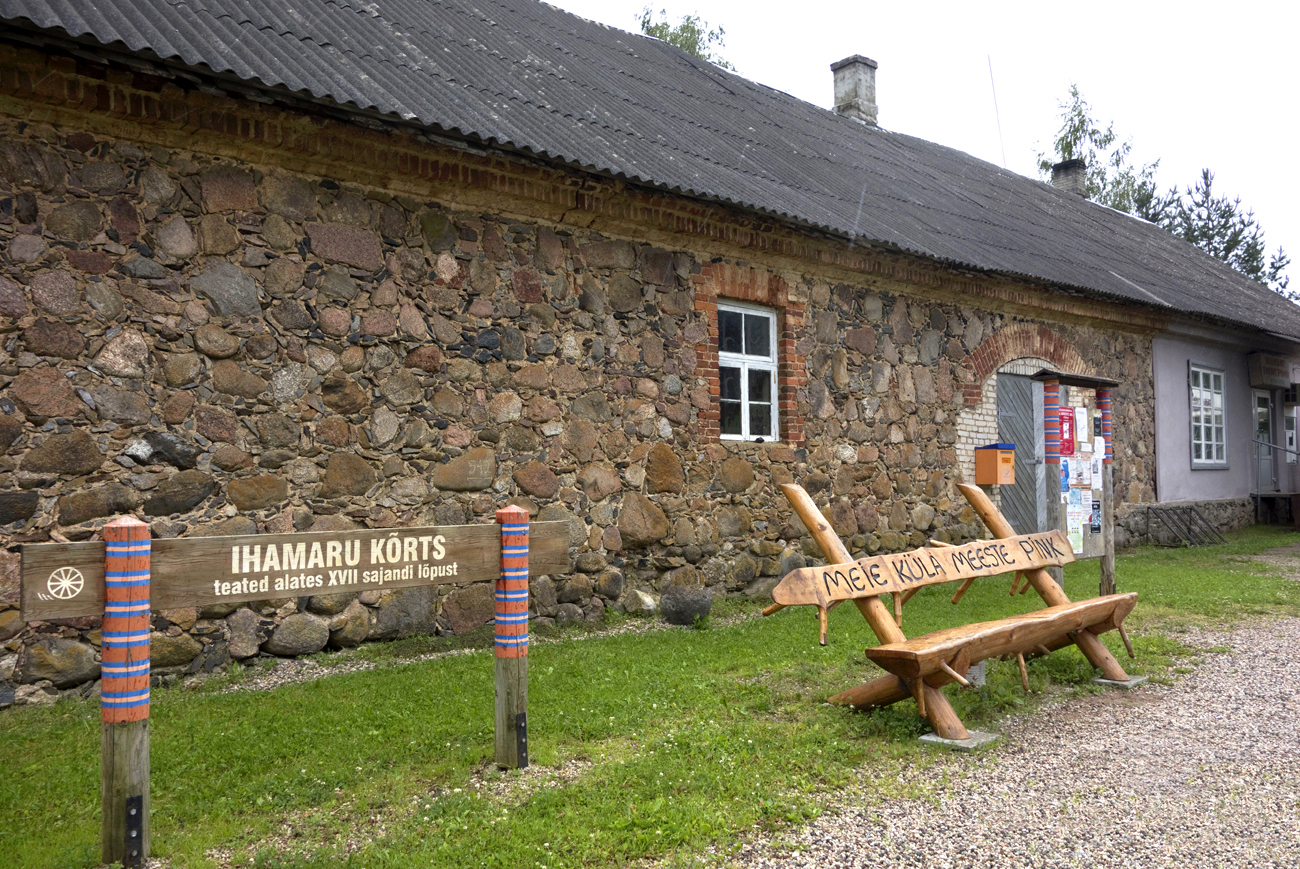
Walking on along the postal road, we soon see the building of Ihamaru inn. The inn was here already in the late 17th century, when it was called Krootuse inn as it belonged to Krootuse manor. Ihamaru stood here later and was probably active until 1916.
For years, the old inn building accommodated a shop and the village cafe. They have sadly moved elsewhere, but there is still a place where you can eat. Hopefully it is as good as the previous one. We could not unfortunately test it, as we happened to pass by on a Tuesday when the place is closed.
We rest a little under the roof of the new Ihamaru bus stop. The sight of a larger-than-life sculpture of a man a bit further off who strides purposefully ahead, inspires us to move on. This is sculptor Mati Karmin’s 3 m tall rust-coloured work called The Traveller (2012), welded together of metal plates. It pays homage to the Postal Road and all the travellers. Nearby is a stand with the history of postal stations and roadside inns.

Turning off to Kutsarimäe road just before the sculpture, we come upon the birthplace of writer Richard Roht. Roht (1891–1950) published collections of short stories, novels, translations and memoirs, tales for children. His birthplace is marked by a granite boulder, with two old ploughshares and plaques bearing the names of two writers. The other one is Valev Uibopuu (1913–1997), nephew of Richard Roht. In 1943 he fled to Sweden. He was a writer and a linguist, wrote short stories, novels, research papers about Finno-Ugric peoples and their languages.
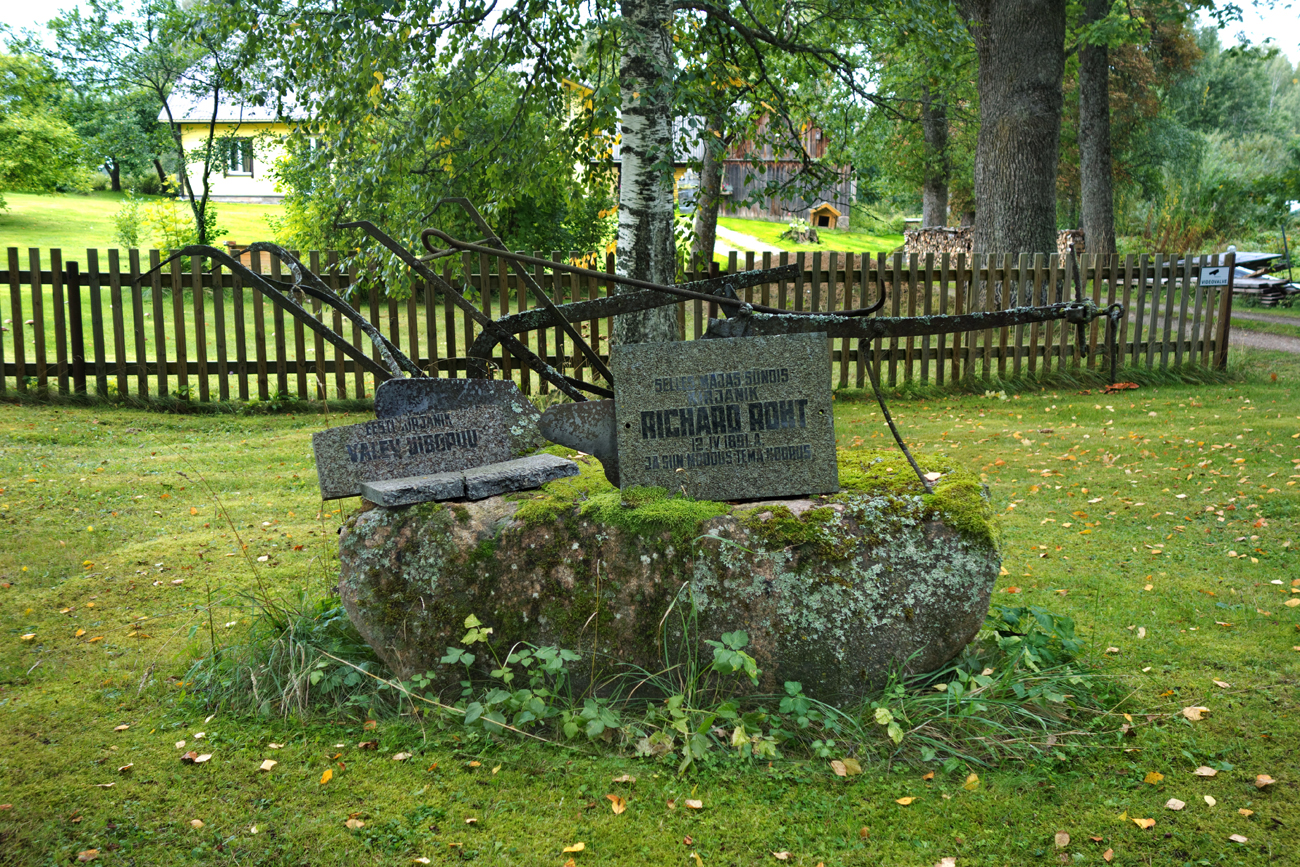

Karaski manor’s former dairy building a few dozen metres away is being renovated. It will become the Ihamaru village centre. On 12 April 2021 a memorial bench to Richard Roht was unveiled next to the centre. The bench is made of an old oak block; sculptor Erkki Lepik carved animals and birds known from Roht’s children’s stories on the posts.
A short distance further across the road stood Karaski schoolhouse, which operated in 1874–1930.
We head back to „The Traveller”, cross the Postal Road and Põlva–Saverna crossroads and continue along the Postal Road towards Varbuse.
Daila Aas, May 2021
RMK Palojärve camping site
Ihamaru village, Kanepi rural municipality, Põlva; Tel (+372) 676 7122
https://www.puhkaeestis.ee/et/rmk-palojarve-telkimisala
Postal Road Gurmee
Open: Wed, Thu 12.00–18.00; Fri, Sat 12.00–19.00; Sun 12.00–18.00.
Tel. 665 9665, https://postiteegurmee.ee/
Sources
https://www.postitee.ee/teenusepakkujad/karilatsi-ihamaru
https://docplayer.me/31014574-Tartu-voru-postitee-ajaloolise-teeruumi-uuring.html
https://www.folklore.ee/pubte/ajaloolist/polva/
https://tartu.postimees.ee/940604/randaja-alustab-rannakut-postiteele
